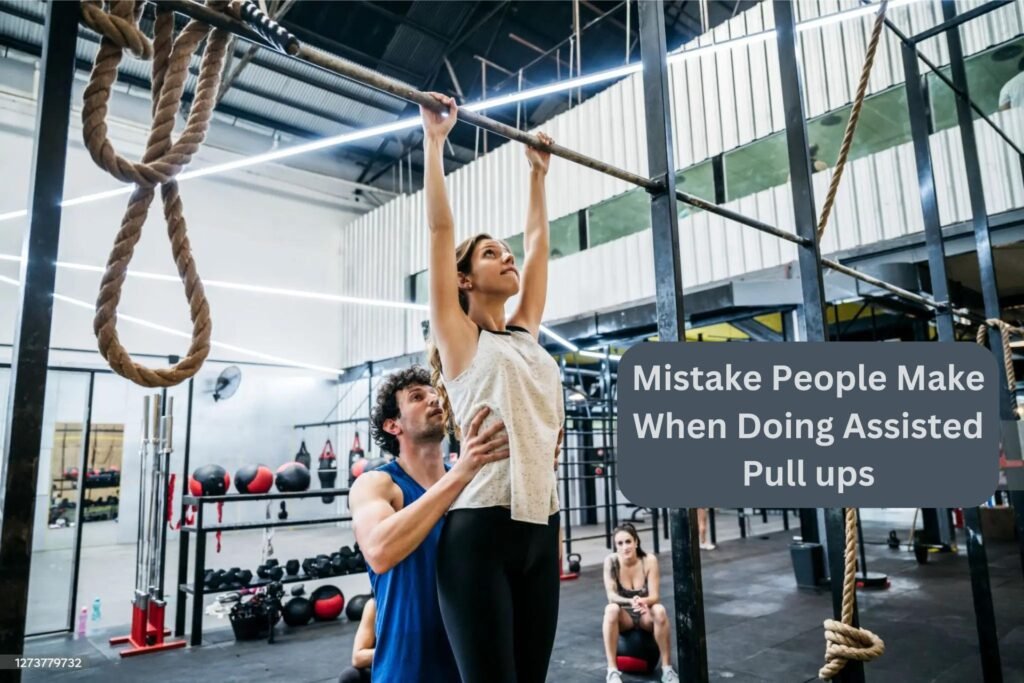Are assisted pull ups effective, or are they just a waste of time?
I’ve been in the game for over a decade, and I’ve seen countless people struggle with traditional pull-ups, only to turn to assisted pull-ups as a solution.
But are they really worth it?
What are Assisted Pull ups?
Assisted pull-ups are a type of exercise that uses a resistance band or a partner to assist you in completing a pull-up.
The purpose of assisted pull-ups is to make it easier for people to access the benefits of pull-ups, regardless of their fitness level.
By using a resistance band or a partner to assist you, you can increase the weight and resistance, making it easier to build strength and muscle.
Here’s how assisted pull-ups work:
- Resistance band: A resistance band is a lightweight, portable device that provides resistance to your movements. When you use a resistance band to assist you in a pull-up, it helps to increase the weight and resistance, making it easier to build strength and muscle.
- Partner assistance: Partner assistance involves having someone assist you in completing a pull-up by providing resistance or support. This can be done by having someone hold your legs or provide resistance to your movements.
The video below shows exactly how to use the resistance band to perform assisted pull ups.
Benefits of Assisted Pull ups
Assisted pull-ups offer several benefits, including:
| Benefit | Description |
| Increased accessibility | Easier to access the benefits of pull-ups, regardless of fitness level |
| Improved lat strength | Targets lat muscles for a strong back |
| Enhanced muscle endurance | Builds muscle endurance for high-intensity activities |
The #1 Mistake People Make When Doing Assisted Pull ups
So, what’s the #1 mistake people make when doing assisted pull-ups?
It’s actually quite simple: they don’t use proper form. When you’re using a resistance band or a partner to assist you, it’s easy to get lazy and sacrifice form for the sake of convenience.
But, here’s the thing: poor form can lead to injury, and it can also prevent you from getting the most out of your workout.
So, what’s the solution?
Use proper form, and make sure you’re engaging your lat muscles and using your entire back to pull yourself up.
Here are some tips for using proper form when doing assisted pull-ups:

- Keep your core engaged: Your core muscles are essential for stability and control, so make sure you’re engaging them throughout the exercise.
- Use your entire back: Don’t just rely on your arms to pull yourself up – use your entire back to generate power and momentum.
- Keep your shoulders down: Avoid scrunching your shoulders up towards your ears, as this can put unnecessary strain on your neck and shoulders.
To avoid common mistakes and maximize the effectiveness of assisted pull-ups, check out this comprehensive guide.
Correcting the Mistake: Tips for Effective Assisted Pull ups
So, how can you avoid the common mistake of poor form and get the most out of your assisted pull-ups?
Check below some tips:
- Start with a lighter resistance: Don’t be afraid to start with a lighter resistance and gradually increase it as you build strength and endurance.
- Focus on proper form: Make sure you’re using proper form and engaging your lat muscles and entire back to pull yourself up.
- Practice regularly: Consistency is key when it comes to building strength and muscle endurance.
PRO TIP
Use the Assisted Pull-up Machine at the Gym to Get a Stronger Back and Avoid Common Mistakes
Perfect execution of assisted pull ups with a lat machine at the gym.
Conclusion
Assisted pull-ups can be a game-changer for those who struggle with traditional pull-ups.
By using a resistance band or a partner to assist you, you can increase the weight and resistance, making it easier to build strength and muscle.
However, it’s essential to use proper form and technique to get the most out of your workout.
Following the tips and advice outlined in this article, you can avoid common mistakes and get the most out of your assisted pull-ups.
FAQs
Here are some frequently asked questions about assisted pull-ups:
What is the best way to use a resistance band for assisted pull-ups?
The best way to use a resistance band for assisted pull-ups is to start with a lighter resistance and gradually increase it as you build strength and endurance.
Can I use a partner to assist me with pull-ups?
Yes, you can use a partner to assist you with pull-ups. This can be a great way to increase the weight and resistance, making it easier to build strength and muscle.
How often should I do assisted pull-ups?
It’s recommended to do assisted pull-ups 2-3 times per week, with at least one day of rest in between.
How long will it take to see results from assisted pull-ups?
It can take several weeks to see results from assisted pull-ups, depending on your starting level of fitness and consistency with your workout routine.

